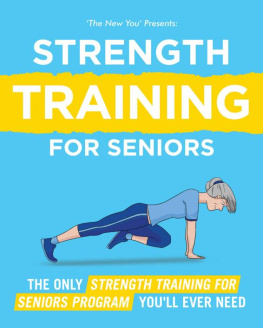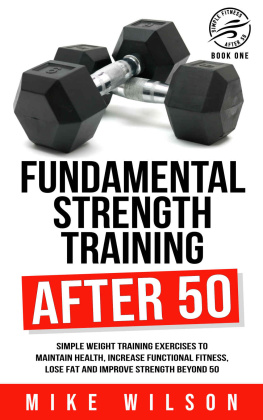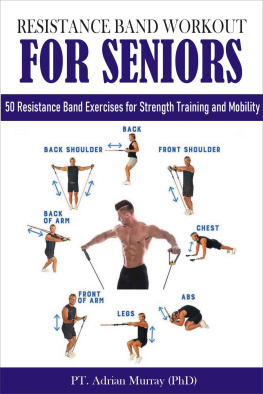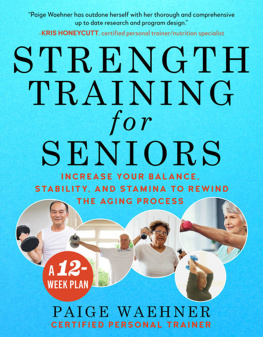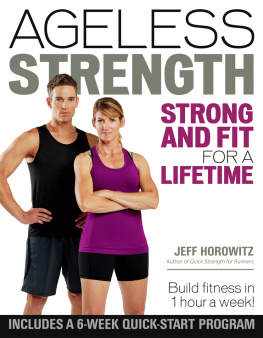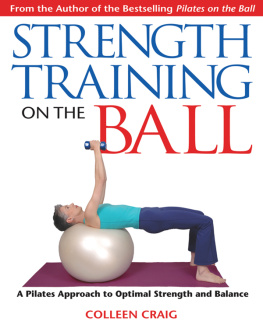Waehner Paige.
Strength Training for Seniors: Increase your Balance, Stability, and Stamina to Rewind the Aging Process
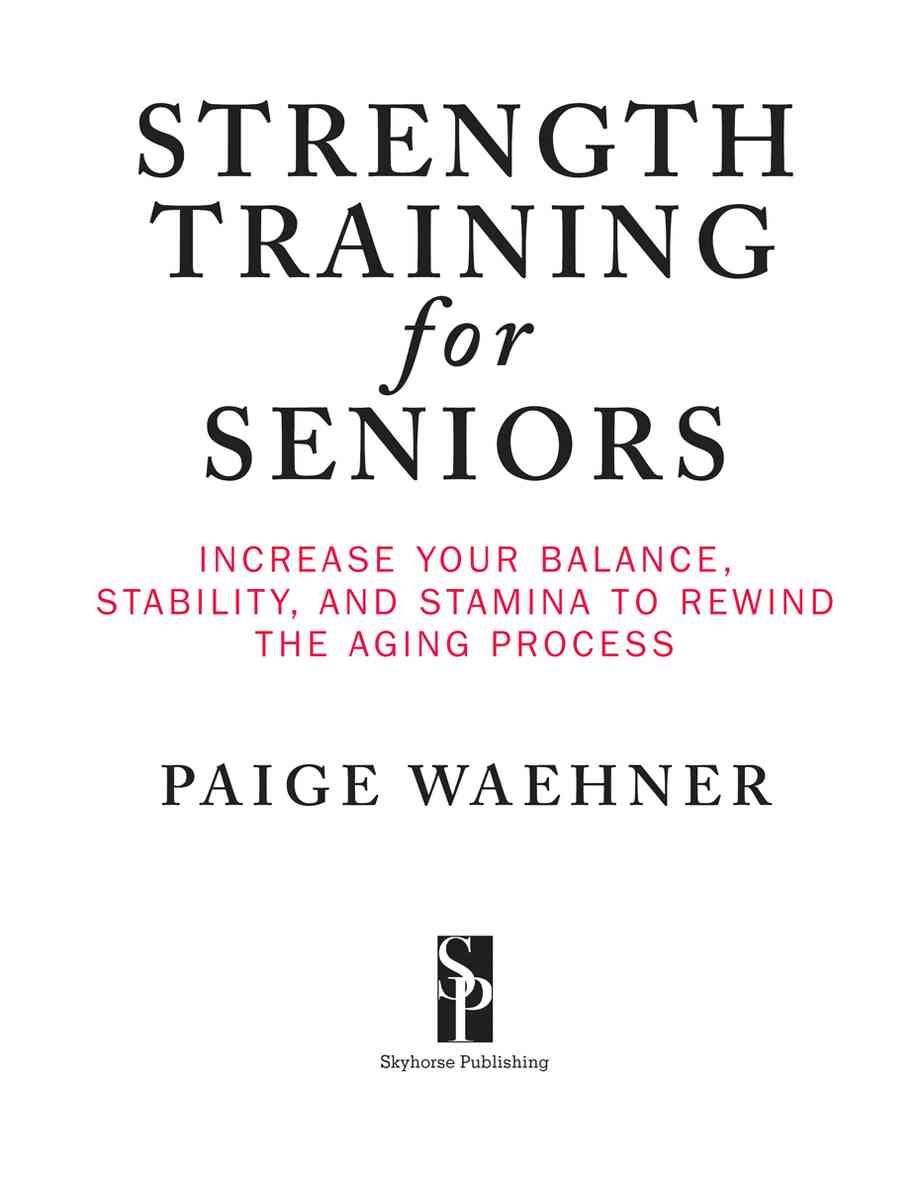

Getty Images
Introduction: The Importance of Strength Training for Older Adults
What would you do to gain access to the Fountain of Youth? People have been searching for this mythical artifact for centuries. There have been stories of healing rivers going back to the fourth century BCE, the most notable being the legend that the Spanish explorer Ponce de Len was actually searching for the Fountain of Youth when he landed in Florida in 1513.
Historians now assert that this was not the real reason for his travels, but through the years many people have believed in the restorative power of magical waters.
These days, we know the real Fountain of Youth doesnt exist (at least we think so), but that doesnt mean there isnt a way to increase longevity as well as the quality of life as we age.
In fact, there is a way to reverse the aging process all the way down to the cellular level: strength training.
We cant stop the aging process, which is determined by our genes, but there are other factors that affect how we age such as nutrition, stress, smoking, and exercise.
By focusing on these things, especially strength training, your biological age may just end up being a lot younger than your chronological age. That means not just living longer, but enjoying living longer.
Whether youre already active and exercising or its been a while, this book will show you exactly what you need to do to work on building lean muscle tissue, strength, and stamina. Youll also work on some of the most important aspects that your body needs to age well and avoid injuries and falls: balance, core strength, and stability.
And the best part is that its never too late to start! While defining what a senior population is can be a complex process, experts generally start with the youngest baby boomers, born in 1964, and includes anyone up to more than 100 years old.
But, no matter how old you are or what your fitness level is now, anyone can get stronger. Studies show that for seniors, starting weight training helps you avoid age-related muscle loss, which is integral for being strong, being independent, and preventing injuries.
Your life will get easier. Chasing after kids or grandkids, carrying groceries, getting in and out of a car, cleaning, and chores will all get easier when youre strong, and its not just about physical strength. Strength training builds confidence and helps combat mental health concerns like anxiety and depression.
My own interest in working with seniors began with my grandmother. In her 80s, she was still doing water aerobics and riding a stationary bike at the local YMCA. At some point, she stopped going and, within a year, she could barely walk with a walker. She fell and broke her hip and, within the next few months, at 89, she passed away.
She lived a great life, of course, but it really brought home to me just how much a little strength can go such a long way. With regular exercise, she might have been healthier, happier, and more independent. Her decline may not have been so fast, and maybe I would have had her in my life a little longer.
Weight training has helped me through so many things, from regular life events like having to bail water out of my basement during a flood to healing from four different back surgeries. It has helped me in so many ways, and I want that for you, too. This is the prime of your life, so lets make it as good as we can!
By opening this book, youve started on your path to a new, stronger body. I promise to walk you through a scientifically-backed 12-week program that helps you gradually and safely build strength, muscle, balance, stability, and more. I cant wait to get started.
Chapter 1
The Basics of Resistance Training
Resistance training has been around for about as long as civilization. In fact, go back to ancient Rome and Greece and you find the origins of the Olympics which highlighted strength, power, and speed with such sports as the discus, shot put, or the hammer throw.
Throughout time, resistance training has evolved to fit our modern world with equipment such as dumbbells, barbells, weight machines, and more.
Our understanding of resistance training has evolved as well. While it was once considered for bodybuilders like Arnold Schwarzenegger, we now know that anyone can benefit from lifting weights, especially older adults.
What experts have figured out through a variety of studies is that if we lift enough weight for a certain number of repetitions and sets of an exercise, we can build muscle and strength.
And its not just muscles that benefit. We also know that resistance training can help build stronger bones, a great benefit for anyone but especially people dealing with osteoporosis.
So why is all of this so important?
Think of an everyday activity, such as moving from a seated to a standing position, something many of us do throughout the day. That one activity involves a variety of muscles:
The quadriceps, on the front of the thighs and the glutes, shorten and contract to help your body stand against gravity. And, those arent the only muscles working. Your core muscles work to keep you balanced and then there are your feet, ankles, and calves also working at the same time.
Think of how many times you do that in one day, sitting and standing, and all the important muscles used for that simple activity.
Making those muscles stronger makes that activity easier, just one reason that resistance training can actually improve your daily life. Its not just resistance training, but functional training.
That said, resistance training has some basic tenets to help you understand how it works and how to create workouts that make sense for your needs and goals.
a.The ExercisesThe first thing to understand about resistance training is that we want to focus on all the major muscle groups in the body. In fact, during the first few weeks of this program, thats exactly what youre going to work on. Those include:
i.ChestThese are some of the largest muscles in the upper body used for pushing motions such as pushing open a door. Just a few exercises youll do to work the chest include push-ups, chest presses, and chest flies.
ii.BackThe back also includes large, strong muscles, especially the latissimus dorsi (the lats) on either side of the back. You use these muscles to pull things towards you and the exercises mimic that, such as dumbbell rows and reverse flies. Well also focus on the lower back, which is one area of the body that often feels stiff and sore from a little too much sitting.
iii.ShouldersThe shoulders are involved in everything from lifting things overhead to pulling on a seatbelt. The exercises that target these muscles include overhead presses, lateral raises, and upright rows.
iv.BicepsThink of picking up a set of grocery bags and holding them as you walk to your door. Your biceps are doing most of the work here and youll do a variety of exercises, from biceps curls to concentration curls, to build endurance and strength in your arms.
v.TricepsThe back of your arms include three small muscles called the triceps and these are involved in any pushing motion. Youll do kickbacks and triceps extensions to work these muscles, making them stronger in daily life.
vi.CoreMany people think the core only involves the abdominal muscles, but it actually includes your entire torso, including your abs, lower back, and pelvic area. Consider your core as your powerhouse, the origin of all basic movements and, of course, the muscles that protect your spine. Youll do a variety of specific exercises to keep your core lean and strong for all your daily movements.


![Dorian Ritter (2023) - The Strength Training Workouts Bible for Seniors 60+: [7 in 1] The Most Complete Guide of 200+ Simple Exercises that Elderly of Any Level Can Do Step by Step at Home](/uploads/posts/book/451362/thumbs/dorian-ritter-2023-the-strength-training.jpg)
